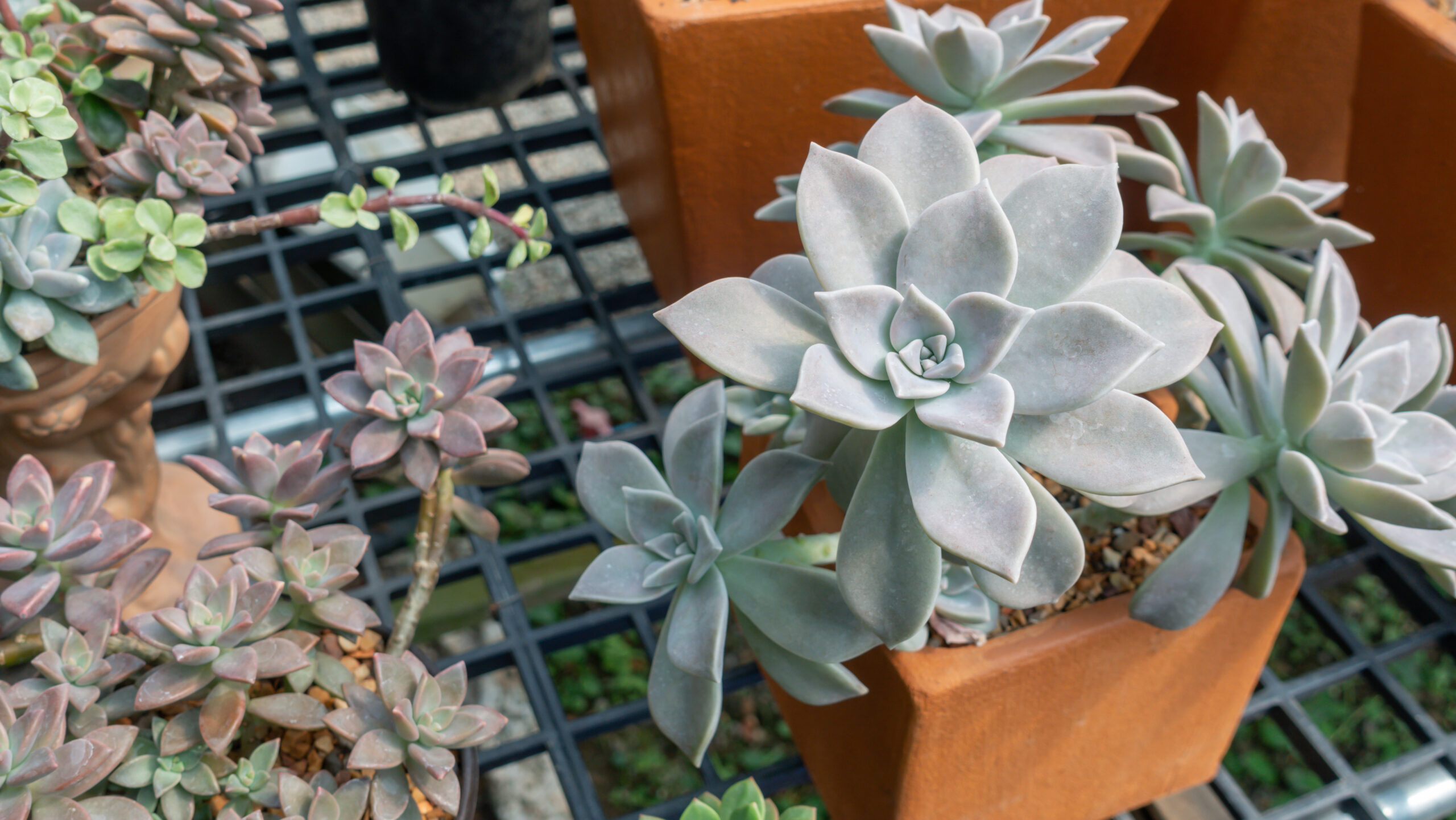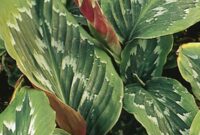Propagating Pig’s Ear Succulents (Cotyledon orbiculata) can be an enjoyable and cost-effective way to expand your succulent collection or share these beautiful plants with friends and family.
Whether you’re a seasoned succulent enthusiast or a beginner, this step-by-step guide will walk you through the various methods of propagating Pig’s Ear Succulents successfully.
Materials You’ll Need:
Before we dive into the propagation process, let’s gather the essential materials:
- Healthy Pig’s Ear Succulent: Choose a mature and healthy parent plant for propagating. Make sure it’s free from pests and diseases.
- Sharp Pruning Shears or Scissors: Clean and sharp cutting tools are crucial to prevent damage to the plant.
- Well-Draining Potting Mix: Prepare a mix suitable for succulents or cacti. You can also make your own by combining potting soil, perlite, and sand.
- Small Pots or Containers: You’ll need pots or containers to plant the propagated cuttings.
- Optional: Rooting Hormone (for stem cuttings): While not mandatory, rooting hormone can encourage faster root development for stem cuttings.
Step 1: Select the Propagation Method
In this first step, you need to choose the propagation method you will use to multiply your Pig’s Ear Succulent (Cotyledon orbiculata) plant.
There are several methods to choose from, and the choice of method depends on your preferences and the condition of the parent plant.
Stem Cuttings Method:
This method is ideal for larger, well-established plants. To use this method:
- Select a Healthy Stem: Choose a healthy and mature stem from your parent plant. Make sure there are no signs of disease or pests on the stem.
- Cut the Stem: Use clean, sharp pruning shears or scissors to cut a portion of the stem you’ve selected. This cutting will become a new plant.
- Allow the Cutting to Callus: Place the stem cutting in a shaded and dry area for a few days to allow the cut end to callus. This helps prevent rot when you plant it.
- Plant the Stem Cutting: Fill a small pot with well-draining soil mix. Insert the calloused end of the stem cutting into the soil, about an inch deep.
- Water Lightly: Give it a light watering and place the pot in a location with bright, indirect sunlight.
Leaf Cuttings Method:
This method is suitable for both large and small succulents. To use this method:
- Place the Leaf on Top of Soil: Lay the calloused leaf on the surface of the soil in a shallow container.
- Mist the Soil Lightly: Spritz the soil lightly with water to moisten it.
- Place in Bright, Indirect Light: Put the container in a location with bright, indirect sunlight.
Offsets Method:
Offsets are small, naturally occurring baby plants that appear around the base of the parent plant. To use this method:
- Separate the Offsets Gently: Carefully detach the offsets from the parent plant.
- Plant the Offsets: Plant the offsets in small pots filled with well-draining soil.
- Follow Care Guidelines for Mature Plants: Provide the same care as you would for mature Pig’s Ear Succulent plants.
Step 2: Prepare the Parent Plant
The second step involves preparing the parent Pig’s Ear Succulent (Cotyledon orbiculata) plant before proceeding with the propagation process. This is a crucial stage to ensure that you take healthy and optimal cuttings to successfully produce new plants. Here are the detailed steps:
- Select a Healthy Parent Plant: First and foremost, make sure to choose a parent plant that is in good health. The plant from which you will take cuttings should be free from diseases, pests, or any other issues. Opt for a plant that has been growing well and hasn’t undergone severe stress.
- Choose the Part to be Cut: Determine the part of the parent plant that you will use for propagation. If you’re using the stem cuttings method, select a strong, undamaged stem. If you’re using the leaf cuttings method, choose healthy and intact leaves. If you’re using the offsets method, pick offsets that are well-formed and sufficiently mature.
- Inspect the Condition of the Parent Plant: Inspect the selected part you intend to cut thoroughly. Ensure there are no signs of disease, rot, or other damage on that part. This will help prevent problems during the propagation process.
- Prepare the Right Cutting Tools: Make sure you have clean and sharp cutting tools. Dull or dirty cutters can damage the plant and make the propagation process more challenging.
By carefully preparing the parent plant, you’ll have quality material to work with for propagation. This is an essential step to ensure that the new plants produced have a good chance of thriving and growing strong.
Step 2: Prepare the Parent Plant
The second step involves preparing the parent Pig’s Ear Succulent (Cotyledon orbiculata) plant before proceeding with the propagation process.
This is a crucial stage to ensure that you take healthy and optimal cuttings to successfully produce new plants. Here are the detailed steps:
- Select a Healthy Parent Plant: First and foremost, make sure to choose a parent plant that is in good health. The plant from which you will take cuttings should be free from diseases, pests, or any other issues. Opt for a plant that has been growing well and hasn’t undergone severe stress.
- Choose the Part to be Cut: Determine the part of the parent plant that you will use for propagation. If you’re using the stem cuttings method, select a strong, undamaged stem. If you’re using the leaf cuttings method, choose healthy and intact leaves. If you’re using the offsets method, pick offsets that are well-formed and sufficiently mature.
- Inspect the Condition of the Parent Plant: Inspect the selected part you intend to cut thoroughly. Ensure there are no signs of disease, rot, or other damage on that part. This will help prevent problems during the propagation process.
- Prepare the Right Cutting Tools: Make sure you have clean and sharp cutting tools. Dull or dirty cutters can damage the plant and make the propagation process more challenging.
By carefully preparing the parent plant, you’ll have quality material to work with for propagation. This is an essential step to ensure that the new plants produced have a good chance of thriving and growing strong.
Step 3: Allow Cuttings to Callus (for Stem and Leaf Cuttings)
Step three is crucial, especially when using the stem cuttings or leaf cuttings method for your Pig’s Ear Succulent (Cotyledon orbiculata).
Allowing these cuttings to callus is a critical step to prevent issues such as rot and infections during the propagation process. Here’s a more detailed explanation:
- Understanding the Callusing Process: Callusing is the process by which plant cuttings develop a protective layer on their surfaces. It’s a natural response of the plant to the cutting wound. This layer helps prevent excessive moisture entry and pathogen infections.
- Preparing the Cuttings: After you’ve made the cut on the selected stem or leaf, let the cuttings remain undisturbed for several days. This allows the cuttings to dry out and develop the protective layer.
- Placement and Timing: Place the cuttings in a dry, shaded area to prevent direct sunlight or excessive moisture exposure. The callusing process typically takes a few days to a week, but this can vary depending on environmental conditions. It’s essential to monitor the cuttings during this time to ensure they develop a callus before proceeding with planting.
- Signs of Callusing: You’ll know the cuttings have callused when you observe a dry, slightly hardened surface at the cut end. This callused area is your signal that the cuttings are ready for the next step in the propagation process.
Allowing the cuttings to callus is a critical step in ensuring the success of your Pig’s Ear Succulent propagation.
It helps protect the cuttings from potential harm and sets the stage for healthy root development once they are planted.
Step 4: Planting Stem Cuttings
This step involves planting the stem cuttings of your Pig’s Ear Succulent (Cotyledon orbiculata) after they have developed a callus.
Proper planting is crucial to ensure the cuttings take root and grow into healthy new plants. Here’s a more detailed explanation:
- Prepare the Pot: Choose a small pot or container with drainage holes. Proper drainage is essential to prevent waterlogged soil, which can lead to root rot. Fill the pot with a well-draining succulent or cactus potting mix.
- Insert the Stem Cutting: Take the stem cutting that has developed a callus, and gently insert it into the prepared potting mix. Make a small hole in the soil with your finger or a stick, ensuring it’s deep enough to stabilize the cutting but leaving the top part of the cutting exposed above the soil.
- Spacing: If you’re planting multiple stem cuttings, ensure they are spaced apart to allow room for growth without overcrowding. Overcrowding can lead to competition for resources and hinder root development.
- Watering: Water the planted stem cutting lightly, making sure not to soak the soil. It’s crucial to maintain the right balance of moisture, as Pig’s Ear Succulents prefer drier conditions. Water sparingly and allow the soil to dry out between waterings.
- Placement: Place the pot in a location with bright, indirect sunlight. Avoid placing it in direct sunlight, as this can scorch the delicate new cutting. A bright, shaded area or filtered sunlight is ideal.
- Monitor Growth: Keep a close eye on the cutting as it starts to establish roots and grow. This process can take several weeks to months, depending on environmental conditions and the health of the cutting.
- Transplanting: Once the stem cutting has rooted and grown significantly, it can be transplanted into a larger container or into your garden if you prefer outdoor planting.
Remember that patience is key when it comes to propagating succulents.
Pig’s Ear Succulents are known for their resilience, so with the right care and attention to detail during planting, your stem cuttings should eventually develop into healthy, mature plants.
Step 5: Planting Leaf Cuttings
This step involves planting the leaf cuttings of your Pig’s Ear Succulent (Cotyledon orbiculata) after they have developed a callus.
Proper planting is essential to ensure successful root formation and the growth of new plants. Here’s a more detailed explanation:
- Prepare the Container: Select a shallow container or tray with drainage holes to plant your leaf cuttings. Good drainage is essential to prevent water accumulation, which can lead to root rot. Fill the container with a well-draining succulent or cactus potting mix.
- Lay the Leaf Cuttings: Take the leaf cuttings that have developed calluses and gently lay them on top of the prepared potting mix in the container. Space the cuttings apart, ensuring they don’t overlap.
- Bury the Cut End Slightly: While most of the leaf should rest on the soil surface, bury the cut end (the end that was attached to the parent plant) slightly into the soil. This will help anchor the leaf in place and encourage root development from that end.
- Water Sparingly: Lightly mist the soil with water to moisten it, but be careful not to overwater. Pig’s Ear Succulents are adapted to drier conditions, so it’s essential to maintain a balance by allowing the soil to dry out between waterings.
- Provide Indirect Light: Place the container in a location with bright, indirect sunlight. Avoid direct sunlight, as it can scorch the delicate leaf cuttings. Filtered sunlight or a bright, shaded area is ideal.
- Monitor Progress: Keep a close watch on the leaf cuttings as they start to develop roots and potentially new plantlets. This process can take several weeks to a few months, depending on environmental conditions and the health of the leaf cuttings.
- Transplanting: Once the leaf cuttings have established roots and small plantlets, they can be transplanted into individual pots or your garden, depending on your preference.
It’s important to be patient during the leaf cutting propagation process, as it can take some time for new plants to develop.
With proper care and attention to detail during planting, you can encourage the growth of healthy Pig’s Ear Succulent offspring from your leaf cuttings.
Step 6: Caring for Your Propagated Succulents
After successfully planting your Pig’s Ear Succulent cuttings, it’s crucial to provide them with the right care to ensure their healthy growth.
Here’s a more detailed explanation of how to care for your propagated succulents:
Watering:
-
- Water sparingly and allow the soil to dry out completely between waterings. Overwatering is a common mistake with succulents and can lead to root rot.
- Water only when the top inch or so of the soil feels dry to the touch. Use a watering can with a narrow spout to control water distribution.
- Avoid splashing water on the leaves, as wet leaves can make the plant susceptible to fungal issues.
Lighting:
-
- Place your propagated succulents in a location with bright, indirect sunlight. They thrive in well-lit areas, but direct sunlight can scorch their leaves.
- If growing them indoors, consider placing them near a south or east-facing window to ensure they receive adequate light.
Temperature:
-
- Pig’s Ear Succulents prefer temperatures between 60°F to 80°F (15°C to 27°C). They can tolerate slightly cooler temperatures, but avoid exposing them to frost or extreme heat.
Soil:
-
- Continue using well-draining succulent or cactus potting mix to ensure proper drainage and prevent root rot. You can also mix in some perlite or sand for added aeration.
Fertilizing:
-
- Fertilize your succulents sparingly. Use a diluted, balanced, liquid fertilizer formulated for succulents or cacti during the growing season (spring and summer).
- Apply fertilizer every 4-6 weeks, but at half the recommended strength to avoid over-fertilizing.
Pruning:
-
- Trim any dead or damaged leaves as needed to maintain the appearance and health of your plants. Be gentle when handling them to avoid causing injuries.
Pest and Disease Control:
-
- Inspect your succulents regularly for signs of pests such as mealybugs or aphids. If you notice any infestations, treat them promptly with neem oil or insecticidal soap.
- Keep an eye out for any signs of disease, such as rot or mold, and address them immediately by removing affected areas and adjusting your care routine.
Repotting:
-
- As your propagated succulents grow, they may outgrow their initial pots. Repot them into slightly larger containers with fresh potting mix when needed, typically every 2-3 years.
By following these care instructions, you can ensure that your newly propagated Pig’s Ear Succulents thrive and continue to grow into healthy, beautiful plants.
Proper care is essential to maintain their unique appearance and resilience.
Step 7: Transplanting and Care for Offsets
Transplanting offsets and caring for them is a crucial step in the propagation process of Pig’s Ear Succulents (Cotyledon orbiculata).
Here’s a more detailed explanation of how to transplant offsets and provide proper care for them:
Transplanting Offsets:
- Select Suitable Pots: Choose small pots or containers with drainage holes for each offset. Ensure that the containers are clean and have been prepared with fresh well-draining succulent or cactus potting mix.
- Gently Remove Offsets: Carefully detach the offsets from the parent plant. Use your fingers or a small, clean tool to separate them, ensuring that each offset has its own roots.
- Plant Offsets: Plant each offset in its individual pot or container. Make a small hole in the potting mix and place the offset inside, burying the roots slightly. Pat the soil gently around the offset to secure it.
- Watering: Give the newly planted offsets a light watering to settle the soil and encourage root establishment. Water sparingly and let the soil dry out between waterings.
- Placement: Place the pots with offsets in a location with bright, indirect sunlight. Avoid exposing them to harsh direct sunlight, as they can be sensitive at this stage.
- Monitor Growth: Keep a close eye on the offsets as they establish themselves. They should begin to develop roots and new growth. This process can take several weeks to a few months.
Care for Offsets:
- Watering: Continue to water the offsets sparingly, allowing the soil to dry out between waterings. Overwatering can lead to root rot, so it’s essential to maintain a proper balance.
- Lighting: Provide bright, indirect sunlight for the offsets. They require sufficient light to thrive but should be protected from harsh afternoon sun.
- Temperature: Maintain temperatures between 60°F to 80°F (15°C to 27°C) for the offsets. Protect them from frost and extreme heat.
- Fertilizing: Fertilize the offsets sparingly during the growing season (spring and summer) with a diluted, balanced, liquid fertilizer formulated for succulents or cacti. Apply fertilizer every 4-6 weeks, but at half the recommended strength.
- Repotting: As offsets grow and outgrow their pots, consider repotting them into slightly larger containers with fresh potting mix every 2-3 years.
- Pest and Disease Control: Keep an eye out for pests and diseases, treating them promptly if detected. Regularly inspect the offsets for issues such as mealybugs, aphids, or signs of rot.
By transplanting offsets and providing them with proper care, you can ensure their healthy growth into mature Pig’s Ear Succulent plants.
Offsets are a natural and reliable way to propagate these succulents, and with attention to their needs, they will thrive and contribute to your succulent collection.
Conclusion:
Propagating Pig’s Ear Succulents can be a rewarding experience, and it’s a great way to share the beauty of these plants with others. By following these steps and giving your cuttings the care they need, you’ll soon have a thriving collection of these unique succulents. Happy propagating!



